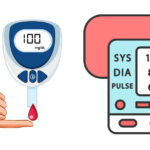Blood pressure, a vital health indicator, reflects the force exerted by circulating blood on the walls of our arteries as the heart pumps. Normal blood pressure is crucial for our bodies’ proper functioning, and understanding what constitutes ‘normal‘ is especially important for patients with hypertension.
What is Normal Blood Pressure Now?
As of 2023, the American Heart Association defines normal blood pressure as less than 120/80 mm Hg. This definition has evolved over time, influenced by a wealth of research and clinical trials. Recent studies have suggested that maintaining systolic blood pressure (the top number) below 120 mm Hg can reduce the risk of cardiovascular events. This is a significant shift from previous guidelines, which set the threshold at 140/90 mm Hg for people younger than 65 and 150/80 mm Hg for those aged 65 and older. For older adults, often the first number (systolic) is 130 or higher, but the second number (diastolic) is less than 80. This problem is called isolated systolic hypertension and is due to age-related stiffening of the major arteries.
History of Normal Blood Pressure Concept
This timeline illustrates the gradual lowering of the threshold for what is considered normal blood pressure:
- Late 19th Century: Riva-Rocci introduces the concept of measuring blood pressure noninvasively in 1896.
- Early 20th Century: Dr. Janeway suggests that normal systolic pressure for healthy individuals should vary between 100 and 140 mm Hg.
- 1970s-1980s: The JNC begins publishing reports on blood pressure, with JNC 3 in 1984 starting to define blood pressure categories more clearly.
- 1990s: JNC 5 in 1993 recommends that normal blood pressure is less than 130/85 mm Hg7.
- 2000s: JNC 7 in 2003 defines normal blood pressure as less than 120/80 mm Hg and introduces the term “prehypertension”.
- 2010s:
- The AHA and ACC in 2017 update guidelines, lowering the threshold for hypertension diagnosis to 130/80 mm Hg from the previous 140/90 mm Hg.
- The ESC/ESH in 2018 recommend reducing blood pressure below 140/90 mmHg for all patients, defining high-normal blood pressure as 130-139/85-89 mmHg, and setting a blood pressure goal of at least 130/80 mmHg but not below 120/70 mmHg for most patients.
- 2020s:
- As of 2023, the AHA continues to define normal blood pressure as less than 120/80 mm Hg.
- The ESC/ESH guidelines continue to recommend a blood pressure goal of at least 130/80 mmHg for most patients, but not below 120/70 mmHg.
Does Normal Blood Pressure Change With Age?
The American Heart Association (AHA) and the European Society of Cardiology (ESC) both acknowledge that blood pressure tends to change with age, but their guidelines do not specify different normal blood pressure values strictly based on age groups. Instead, they provide general targets for blood pressure management across different age categories, emphasizing the importance of individualized care, especially in older adults.
AHA View on BP and Age
The AHA, in collaboration with the American College of Cardiology (ACC), recommends a target blood pressure of less than 130/80 mmHg for adults, including older adults. Read more about their guidelines here: Source 1, Source 2, Source 3, Source 4, Source 5. These guidelines are consistent across all adult age groups, including those over 65 years of age.
The AHA guidelines highlight that systolic blood pressure rises steadily with age due to factors like the increasing stiffness of large arteries and long-term buildup of plaque. However, they do not provide specific blood pressure numbers for different age groups but rather emphasize the same target for adults of all ages.
ESC View on BP and Age
The ESC, along with the European Society of Hypertension (ESH), generally recommends reducing blood pressure to at least 130/80 mmHg for most patients. You can read about their guidelines here: Source 1, Source 2, Source 3, Source 4. For older patients, specifically those who are very old or frail, the ESC suggests a systolic target of 130 to 140 mmHg and a diastolic target of 80 to 90 mmHg, if tolerated. This recommendation acknowledges the increased complexity of managing hypertension in older adults, considering factors like orthostatic hypotension, vascular compliance, and the risk of drug interactions. The ESC guidelines also note that in patients younger than 65 years old, an office systolic BP lower than 130 mm Hg should be aimed for, but not below 120 mm Hg.
How to maintain normal blood pressure?
Maintaining normal blood pressure involves a combination of a healthy lifestyle and regular monitoring. Key strategies include:
- Regular physical activity: Exercise helps lower blood pressure and maintain it at a healthy level.
- Healthy diet: A diet rich in fruits, vegetables, lean proteins, and whole grains, and low in sodium and saturated fats, can help control blood pressure.
- Regular monitoring: Regular blood pressure checks can help detect any changes early, allowing for timely intervention.
- Medication: If lifestyle changes are not enough, medication may be necessary. It’s important to adhere to the prescribed treatment plan.





